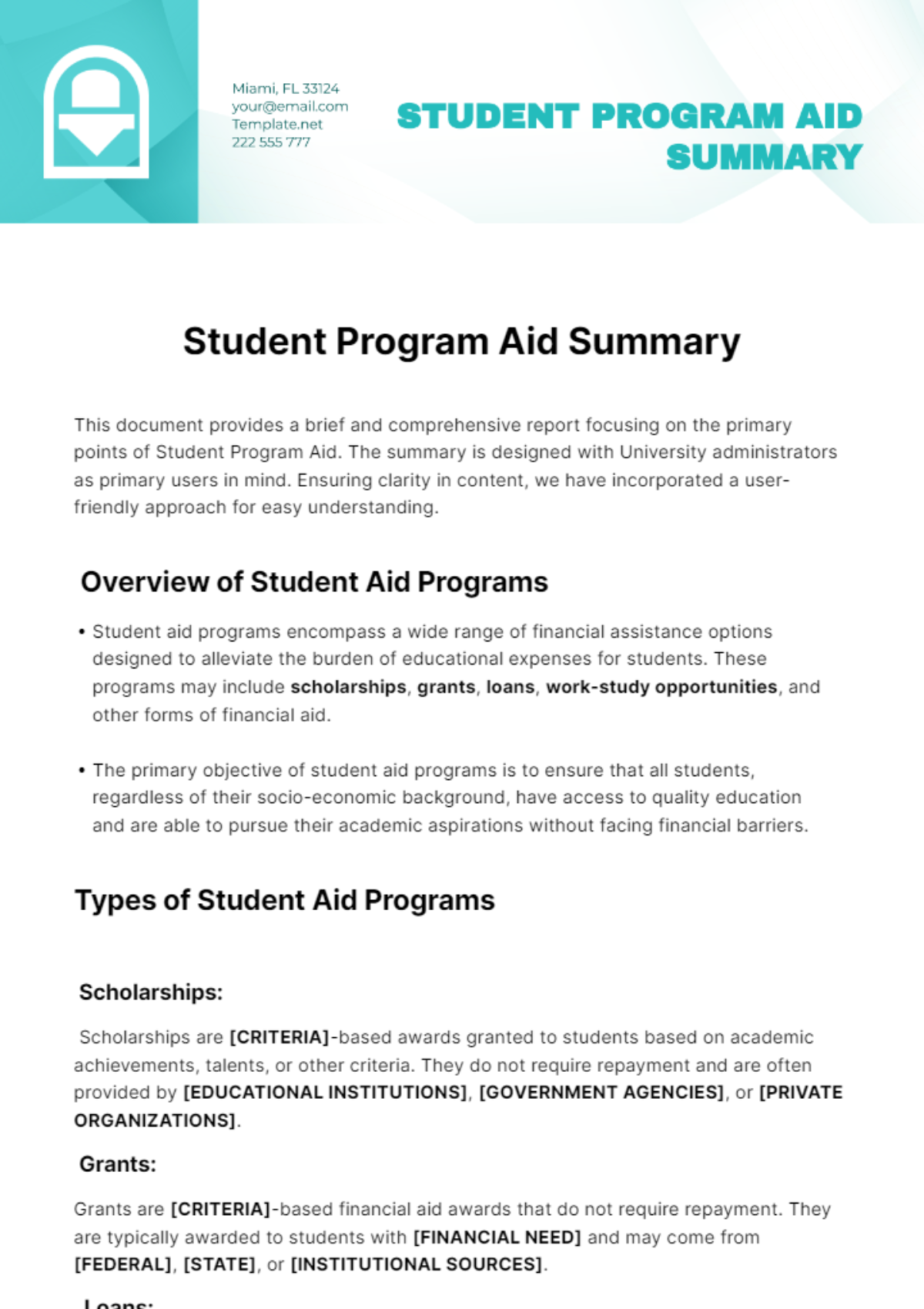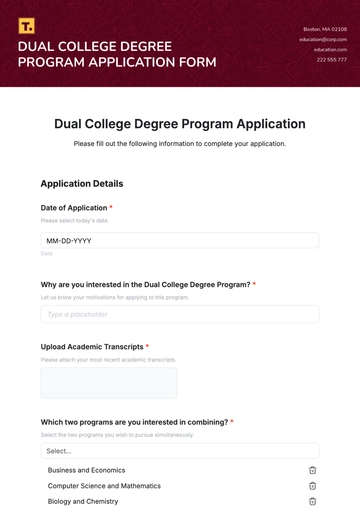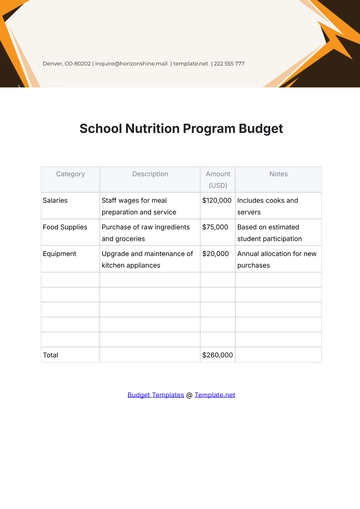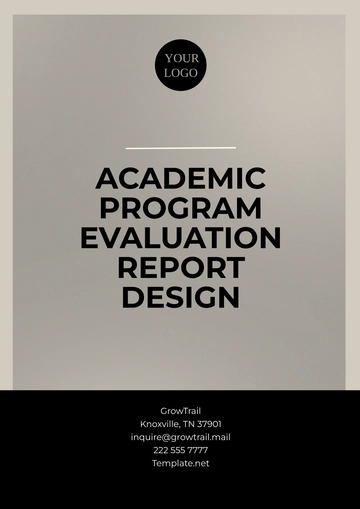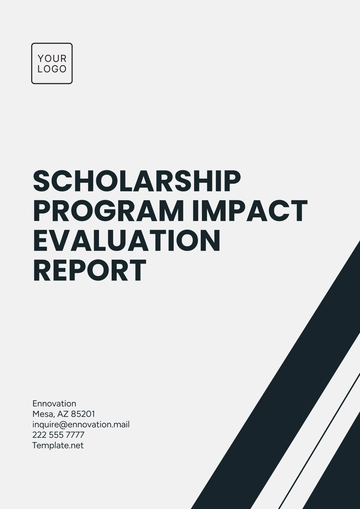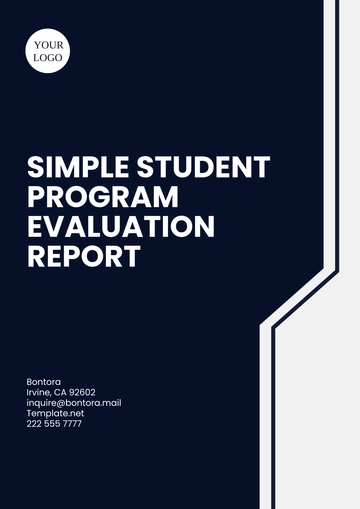Student Program Aid Summary
This document provides a brief and comprehensive report focusing on the primary points of Student Program Aid. The summary is designed with University administrators as primary users in mind. Ensuring clarity in content, we have incorporated a user-friendly approach for easy understanding.
Overview of Student Aid Programs
Student aid programs encompass a wide range of financial assistance options designed to alleviate the burden of educational expenses for students. These programs may include scholarships, grants, loans, work-study opportunities, and other forms of financial aid.
The primary objective of student aid programs is to ensure that all students, regardless of their socio-economic background, have access to quality education and are able to pursue their academic aspirations without facing financial barriers.
Types of Student Aid Programs
Scholarships:
Scholarships are [CRITERIA]-based awards granted to students based on academic achievements, talents, or other criteria. They do not require repayment and are often provided by [EDUCATIONAL INSTITUTIONS], [GOVERNMENT AGENCIES], or [PRIVATE ORGANIZATIONS].
Grants:
Grants are [CRITERIA]-based financial aid awards that do not require repayment. They are typically awarded to students with [FINANCIAL NEED] and may come from [FEDERAL], [STATE], or [INSTITUTIONAL SOURCES].
Loans:
Student loans are borrowed funds that must be repaid with interest. They may be [SUBSIDIZED] or [UNSUBSIDIZED] and are available through [GOVERNMENT PROGRAMS], [PRIVATE LENDERS], or [EDUCATIONAL INSTITUTIONS].
Work-Study Programs:
Work-study programs provide students with part-time employment opportunities to earn money to help cover educational expenses. These programs are often coordinated through the student's [EDUCATIONAL INSTITUTION] and may involve [ON-CAMPUS] or [OFF-CAMPUS] work placements.
Application Process and Eligibility Criteria
To apply for student aid programs, students typically need to complete the Free Application for Federal Student Aid (FAFSA) or other relevant application forms. Eligibility for aid programs is determined based on various factors, including [FINANCIAL NEED], [ACADEMIC MERIT], [CITIZENSHIP STATUS], and [ENROLLMENT STATUS].
It's essential for students to familiarize themselves with the specific eligibility criteria and deadlines associated with each aid program they wish to apply for. Additionally, seeking guidance from FINANCIAL AID ADVISORS or COUNSELORS can help students navigate the application process effectively.
Importance of Student Aid Programs
Student aid programs play a crucial role in promoting access to higher education and fostering academic success among students from diverse backgrounds. By providing financial assistance, these programs help alleviate the financial burden of [TUITION, FEES, BOOKS, AND OTHER EDUCATIONAL EXPENSES].
Moreover, student aid programs contribute to reducing disparities in educational attainment and socioeconomic status, thereby fostering greater equity and opportunity in society. Investing in student aid programs is not only an investment in individual students' futures but also in the overall well-being and prosperity of communities and nations.
Summary:
Student aid programs encompass [TYPES OF FINANCIAL ASSISTANCE], including scholarships, grants, loans, and work-study opportunities, aimed at alleviating the financial burden of [EDUCATIONAL EXPENSES]. Scholarships and grants are awarded based on criteria such as [CRITERIA], while loans require repayment with interest. Work-study programs provide [DESCRIPTION]. Eligibility is determined by factors like [FACTORS], and applications are typically submitted through forms like the [APPLICATION PROCESS]. These programs are crucial for promoting access to higher education, reducing financial barriers, and fostering [GOALS]. Investing in student aid programs benefits both individual students and [BENEFICIARIES].
Summary Templates @ Template.net
